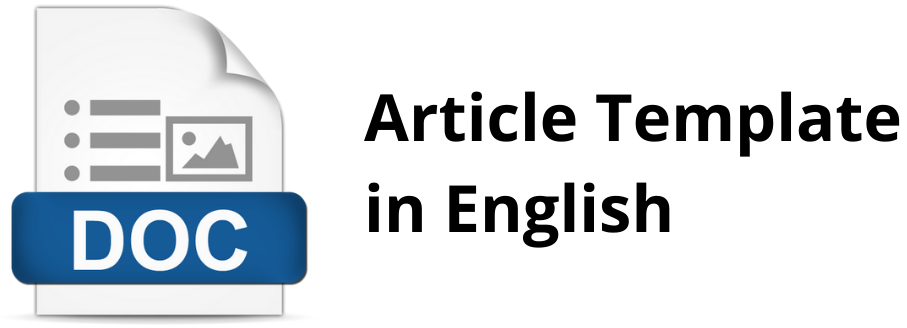Identification on Product Segmentation, Demography, Psychography, and The Impacts on Buying Decision
Abstract
Human daily needs are never separated from the consideration of their fulfillment. The basis for these considerations differs from one another based on needs, quality, price, prestige, place of purchase, and whether or not the item is well-known. The aims of this study are to determine the effect of demographic and psychographic factors on consumer purchasing decisions and to uncover the right combination of marketing strategies for target segments and target markets for retailers. The psychographic profile of the target addressed is also needed by business people. This factor will provide data such as motives, attitudes, and interests that affect the lifestyle and personality of humans. The result of the study shows that the demographic segmentation variable (X1) has a regression coefficient of 0.323 (positive sign) to the purchase decision (Y) and the calculated t value = 4.577, while psychographic segmentation variable (X2) has a regression coefficient of 0.285 (positive sign) to the purchase decision (Y) t value = 3,560. Adjusted R square value can be seen that the coefficient of determination (R2) obtained is 0.743. This means that for Lux, Dove and Dettol brand soap products, 74.3% of purchasing decisions are influenced by demographic and psychographic segmentation, while the rest is influenced by other variables not examined in this study.
References
Gupta A, Goyal N, Jindal, A K, & Kumar, R. (2017). Study of lifestyle diseases among workers of an ammunition factory. J Mar Med Soc 2017;19: 43-7. Doi: 10.4103/jmms.jmms_3_16
Kasali, R. (2005). Manajemen Public Relations Konsep dan Aplikasinya di Indonesia. Jakarta: PT Pustaka Utama Grafiti.
Kotler, & Amstrong. (2001). Prinsip-Prinsip Pemasaran (Vol. I). Jakarta: Erlangga.
Kotler, P. (1994). Marketing Management: Analysis, Planning, Implementation, Control (8th ed.). New Jersey: Prentice Hall Inc.
Kotler, P., & Susanto, A. (1999). Manajemen Pemasaran di Indonesia (4th ed.). Jakarta: Salemba Empat.
Lahindah, L., Merisa, & Siahaan, R. A. (2018). The Influence of Product Innovation and Service Quality to Buying Decision and the Impact to Repeat Buying at Progo Road Bandung. The Asian Journal of Technology Management.. 11 No. 2 (2018): 118-124. Doi: http://dx.doi.org/10.12695/ajtm.2018.11.2.4
Martin, G. (2011). The Importance Of Marketing Segmentation. American Journal of Business Education (AJBE), 4(6), 15-18. https://doi.org/10.19030/ajbe.v4i6.4359
Ma'ruf, H. (2006). Pemasaran Ritel. Jakarta: Erlangga.
Mowen, J. C., & Minor, M. (2002). Perilaku Konsumen (5th ed., Vol. I). Jakarta: Erlangga.
Putra, A. D., & Nasution, R. A. (2017). Young-Adult Fashion Customer Psychographics Segmentation: Bandung Case Study. Journal of Business and Management. Vol.6, No.1, 2017: 1-20.
Sugiyono. (2008). Metode Penelitian Bisnis. Bandung: Afabeta.
Authors who publish in this journal agree to the following terms:
- The authors confirm that they are the authors of the submitted article, which will be published (online) in the journal IJABO (International Journal Administration, Business & Organization) by the Asosiasi Ahli Administrasi Indonesia (A3i), Bandung, Indonesia. The author’s name will be evident in the article. The publisher makes all decisions regarding the layout and distribution of the work.
- Authors guarantee that the work is their own original creation and does not infringe any statutory or common-law copyright or any proprietary right of any third party. In case of claims by third parties, authors commit themself to defend the interests of the publisher and shall cover any potential costs.
- Authors retain copyright and grant the journal the right of first publication, with the work simultaneously licensed under a Creative Commons Attribution-ShareAlike 4.0 International License (CC BY-SA 4.0). This license allows the redistribution and reuse of papers provided the authorship is properly credited.
- Authors can enter into separate, additional contractual arrangements for the non-exclusive distribution of the journal's published version of the work (e.g., posting it to an institutional repository or publishing it in a book), with an acknowledgment of its initial publication in this journal.
- Authors are permitted and encouraged to post their work online (e.g., in institutional repositories or on their website) prior to and during the submission process, as this can lead to productive exchanges and earlier and greater citations of published work.

















